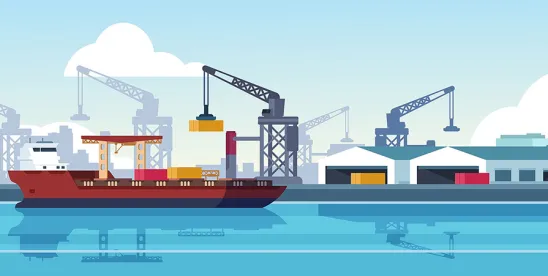As evidenced by the Department of Justice’s recent announcement of a US$2 million criminal fine assessed against the owners of the tanker P/S Dream as part of a guilty plea, violations of federal environmental laws governing vessel discharge can carry significant consequences.
Stakeholders should take note that the EPA recently announced the final Vessel Incidental National Standards of Performance (VINSP Final Rule) that applies to the release of pollutants and invasive species from approximately 85,000 vessels operating in US waters. The Final Rule applies to nonrecreational, non-Armed Forces vessels 79 feet in length and above, as well as ballast water only from fishing vessels of any size and non-recreational, non-Armed Forces vessels less than 79 feet in length.
The VINSP Final Rule is aimed at a diverse cross-section of commercial vessels operating in US territorial waters and the contiguous zone. As stated in an EPA press release: “Clean water and healthy aquatic ecosystems provide multiple benefits to nearby communities. They support commerce and commercial fishing, they serve as sources of drinking water and they connect people to nature,” said EPA Principal Deputy Assistant Administrator for Water Bruno Pigott. “EPA’s final rule will help protect our vital waterways while reducing the spread of invasive species, like zebra mussels. The agency’s final rule also delivers on Congress’ direction to establish nationwide requirements that replace the current patchwork of federal, state and local requirements.”
Background
Discharges incidental to the normal operation of a maritime vessel, as defined in 33 U.S.C. § 1322(a)(12), are often referred to as “incidental discharges” or “discharges.” These discharges range from deliberate acts, for example pumping bilge water, to discharges beyond an operator’s control, for example weather deck runoff. Incidental discharges may contain pollutants or invasive species that that can adversely impact aquatic ecosystems and human health.
Vessel discharge pollution standards are governed by a variety of international, federal and state laws. These laws include, but are not limited, to the Federal Water Pollution Control Act Amendments of 1972 (commonly known as the Clean Water Act (CWA)), the Nonindigenous Aquatic Nuisance Prevention and Control Act (NANPCA) and the Act to Prevent Pollution from Ships (APPS).
The Vessel Incidental Discharge Act (VIDA) was signed into law in December 2018, with the goal of harmonizing the patchwork of US Coast Guard (USCG), EPA and state vessel incidental discharge permits and regulations. The VIDA established a new CWA section 312(p) titled, “Uniform National Standards for Discharges.”
On October 26, 2020, the EPA published a Notice of ProposedRulemaking (85 FR 67818) in the Federal Register to solicit public input on the proposed standards of performance. On October 18, 2023, the EPA also published a SupplementalNotice of Proposed Rulemaking (88 FR 71788) for public comment that shared new ballast water information that the EPA received from the USCG, and discussed additional regulatory options for ballast tanks, hulls and associated niche areas and graywater systems that the EPA was considering for the final rule. The VIDA requires the EPA to develop standards of performance for incidental discharge and the USCG will then have two years to develop implementing and enforcement standards. The VINSP Final Rule is the culmination of an approximately four-year process by the EPA.
The VINSP Final Rule
The VINSP Final Rule applies to a wide variety of commercial vessels operating in the waters of the US or the waters of the contiguous zone. These vessels include, but are not limited to, public vessels of the US, fishing vessels (for ballast water discharges only), passenger vessels such as cruise ships and ferries, barges, tugs and tows, offshore supply vessels, mobile offshore drilling units, tankers, bulk carriers, cargo ships, container ships and research vessels. The VINSP Final Rules applies regardless of Flag State.
The VINSP Final Rule is based on the following standards: (1) best available technology economically achievable, (2) best conventional pollutant control technology and (3) best practicable technology currently available, including the use of best management practices (BMPs), to prevent or reduce the discharge of pollutants.
The VINSP Final Rule is organized into three categories:
- General Operation and Maintenance
- Biofouling Management
- Oil Management
The VINSP Final Rule also sets specific discharge standards of performance for twenty distinct pieces of vessel equipment and vessel systems: ballast tanks; bilges; boilers; cathodic protection; chain lockers; decks; desalination and purification systems; elevator pits; exhaust gas emission control systems; fire protection equipment; gas turbines; graywater systems; hulls and associated niche areas; inert gas systems; motor gasoline and compensating systems; non-oily machinery; pools and spas; refrigeration and air conditioning; seawater piping; and sonar domes.
While not a carbon copy, the standards in the VINSP Final Rule are at least as stringent as the EPA’s 2013 National Pollutant Discharge Elimination System (NPDES) Vessel General Permit (VGP). For some vessel systems/equipment, the standards are substantially the same or slightly modified. The most significant changes are to the discharge standards that apply to ballast tanks, exhaust gas emission control systems, graywater systems, hulls and seawater piping.
The Final Rule also contains provisions for the establishment of no-discharge zones and added protections that apply to “federally protected waters” where the ecosystem may be more sensitive.
The EPA will promulgate these changes to the VGP requirements to transition the permit requirements into regulations that reflect national technology-based standards of performance, to improve clarity, enhance enforceability and implementation and/or to incorporate new information and technology with a target date of 2026. In some cases, this results in the EPA consolidating or renaming the VGP requirements to comport with the VIDA.
Where We Are Now
The EPA’s VISNP Final Rule is enforceable through corresponding USCG regulations. The USCG has two years to develop corresponding implementing regulations to ensure, monitor and enforce compliance with the EPA’s standards. Until the USCG’s regulations are final, effective and enforceable, vessels continue to be subject to the existing discharge requirements established in the EPA’s 2013 Vessel General Permit and the USCG’s ballast water regulations, as well as any other applicable state and local government requirements.
What’s Next
Now that the EPA has issued the VISNP Final Rule, the focus shifts to the USCG. The USCG rule making process will be critical to the enforcement of the VISNP Final Rule. Given the broad application of the VISNP Final Rule to multiple classes and different commercial operations, stakeholders should pay careful attention to the development of the USCG regulations that will implement the VISNP Final Rule.







 />i
/>i
